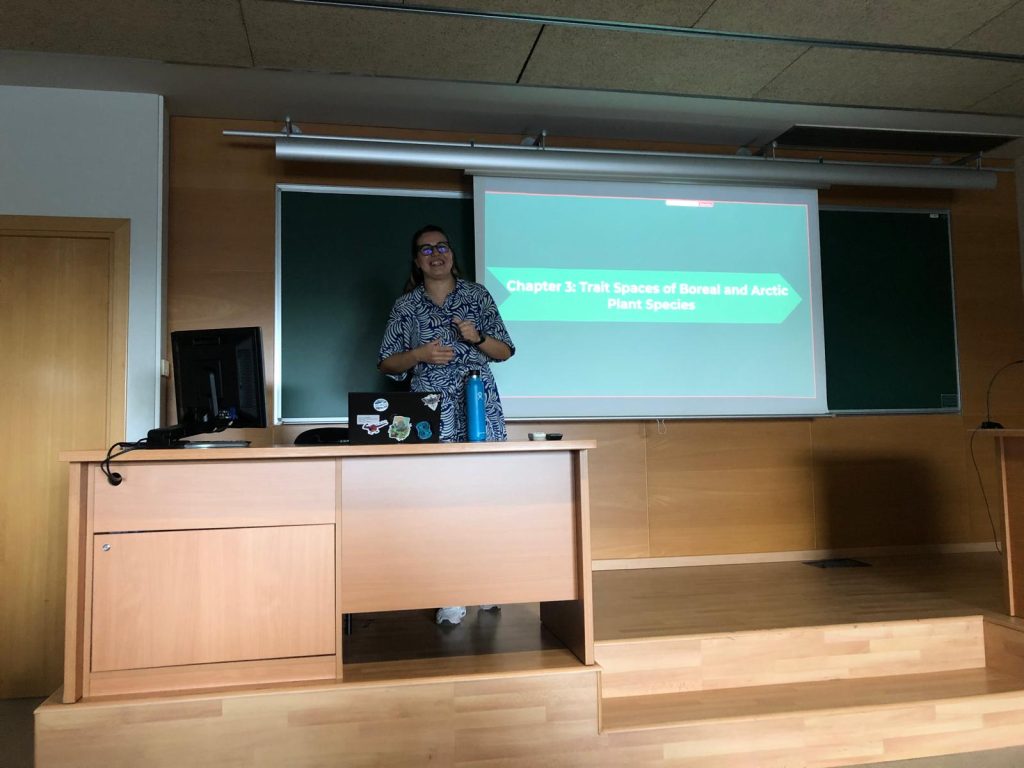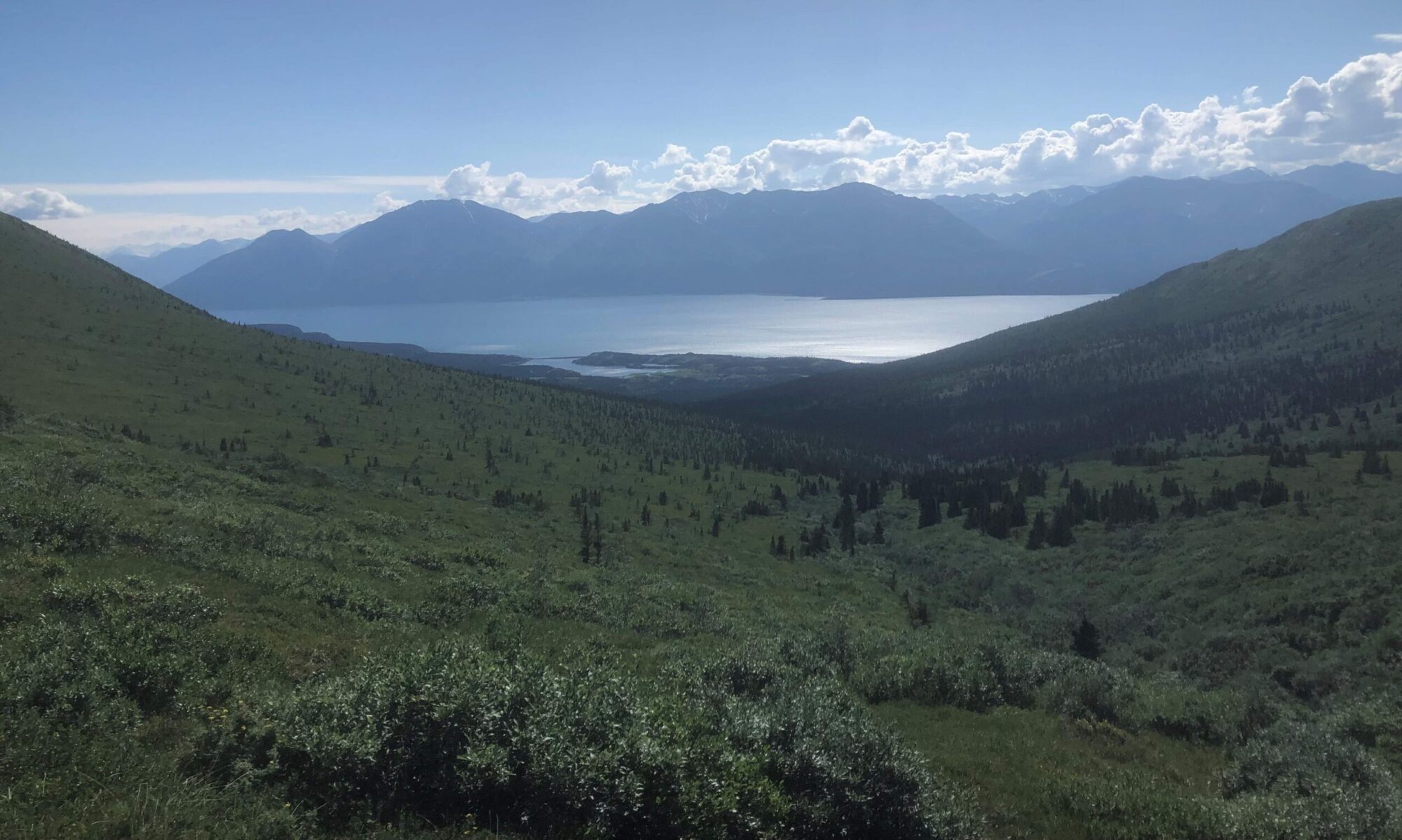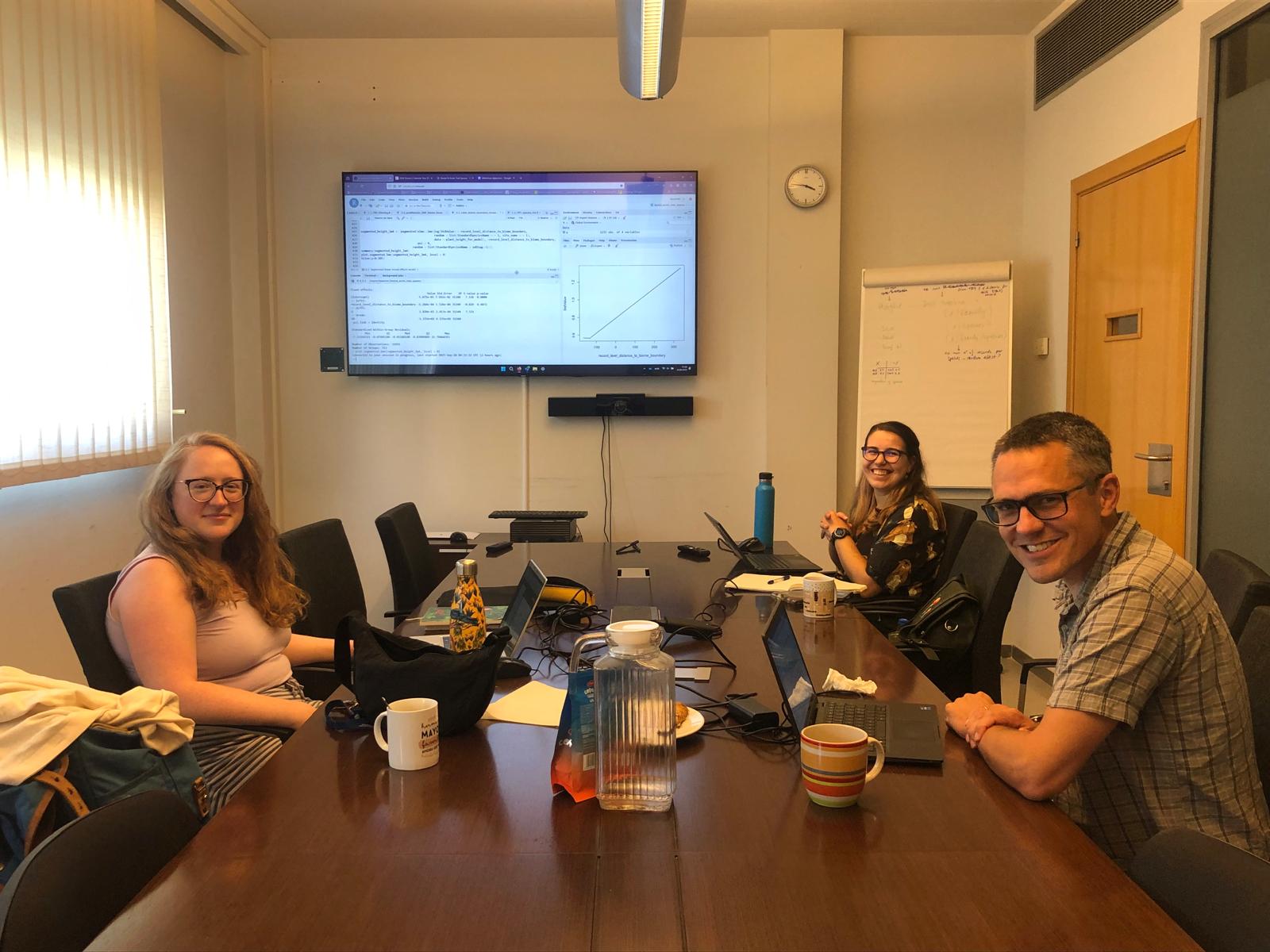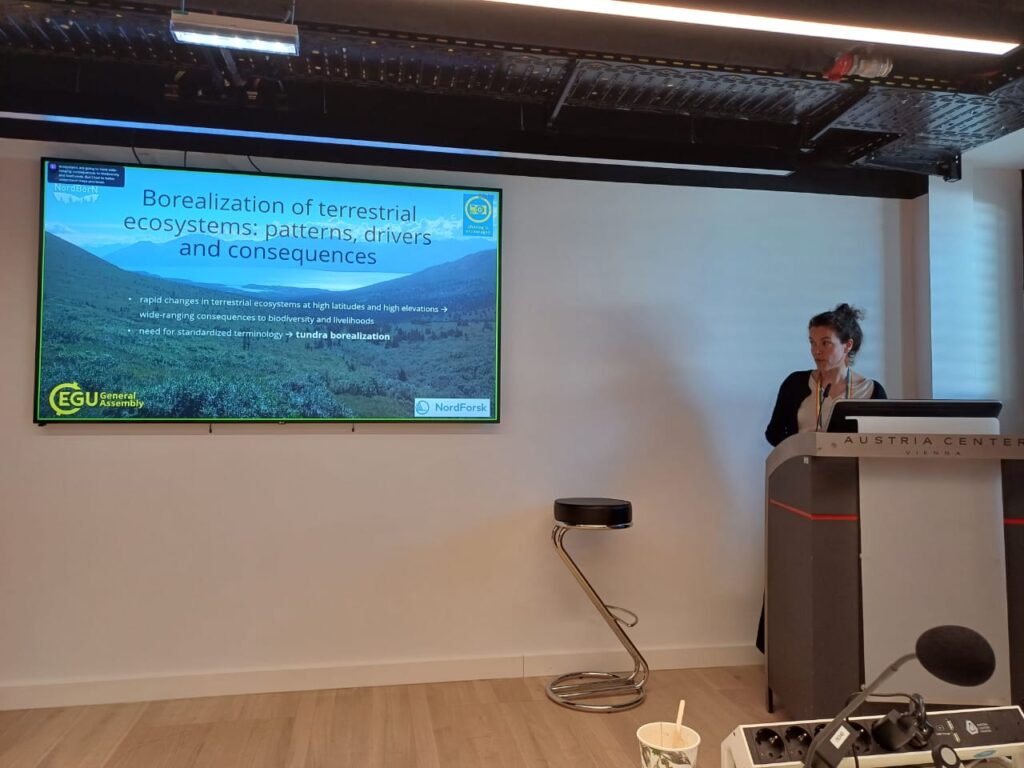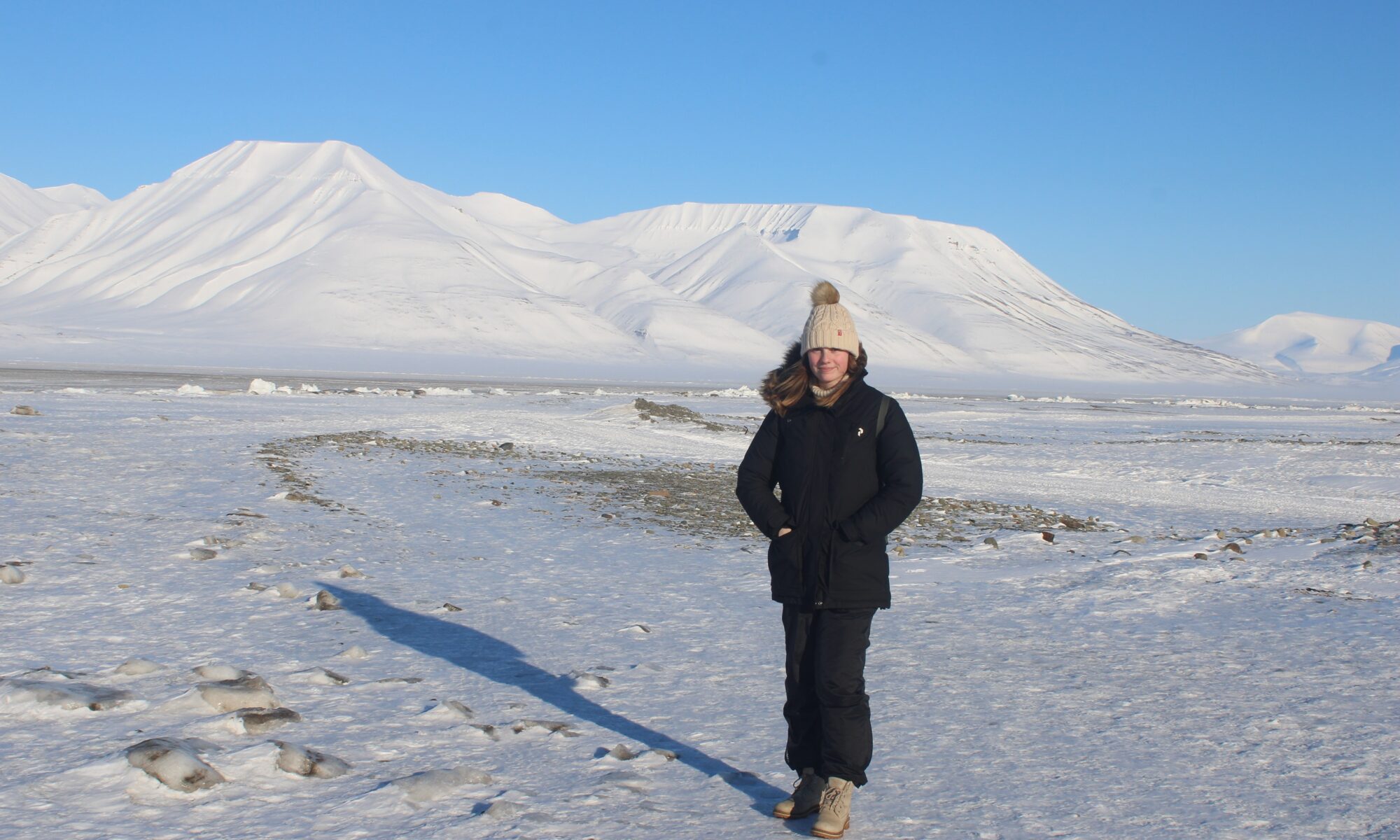Last week, Beatrice Trascau and James Speed visited Mariana García Criado at the Centre for Ecological Research and Forestry Applications (CREAF) in sunny Barcelona, Spain.
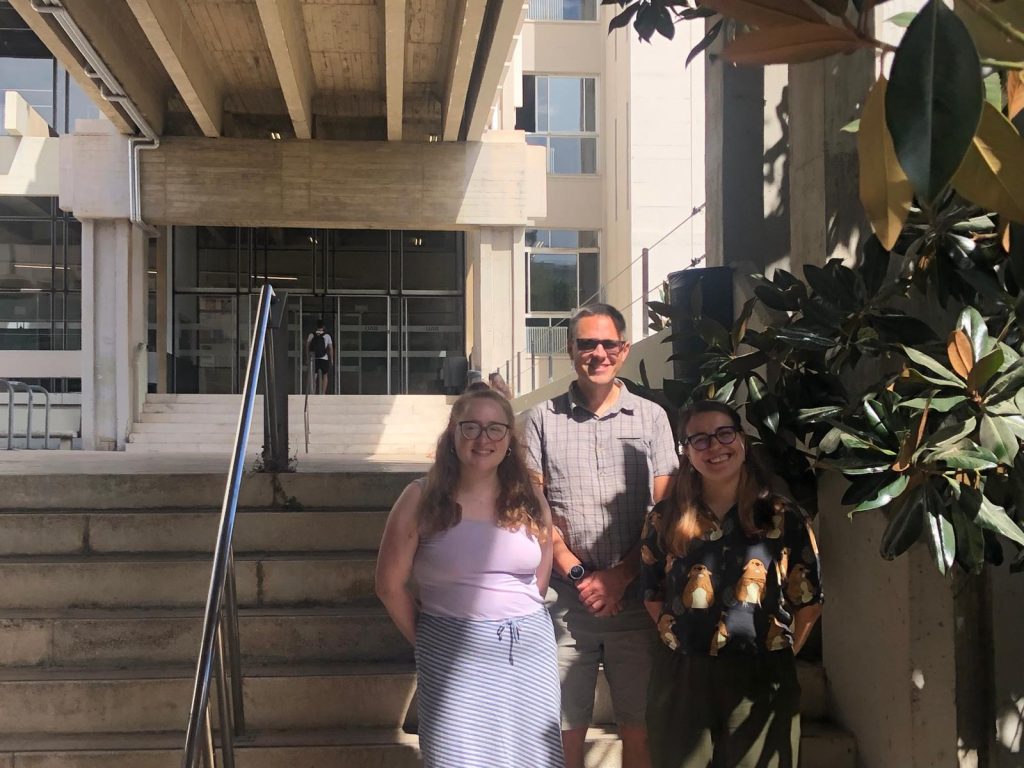
Mariana reports back from an intensive week of work:
We spent the week working on a NordBorN project with the aim of characterizing boreal and tundra plant species’ functional trait spaces. The workshop was a success and we are currently finalising the analyses and starting to write the manuscript. The idea for this project came up during the first NordBorN meeting in Iceland in 2024, so we are very excited to share some updates with you soon!
During their visit, Beatrice also presented her PhD work to the Global Ecology Unit at CREAF.
